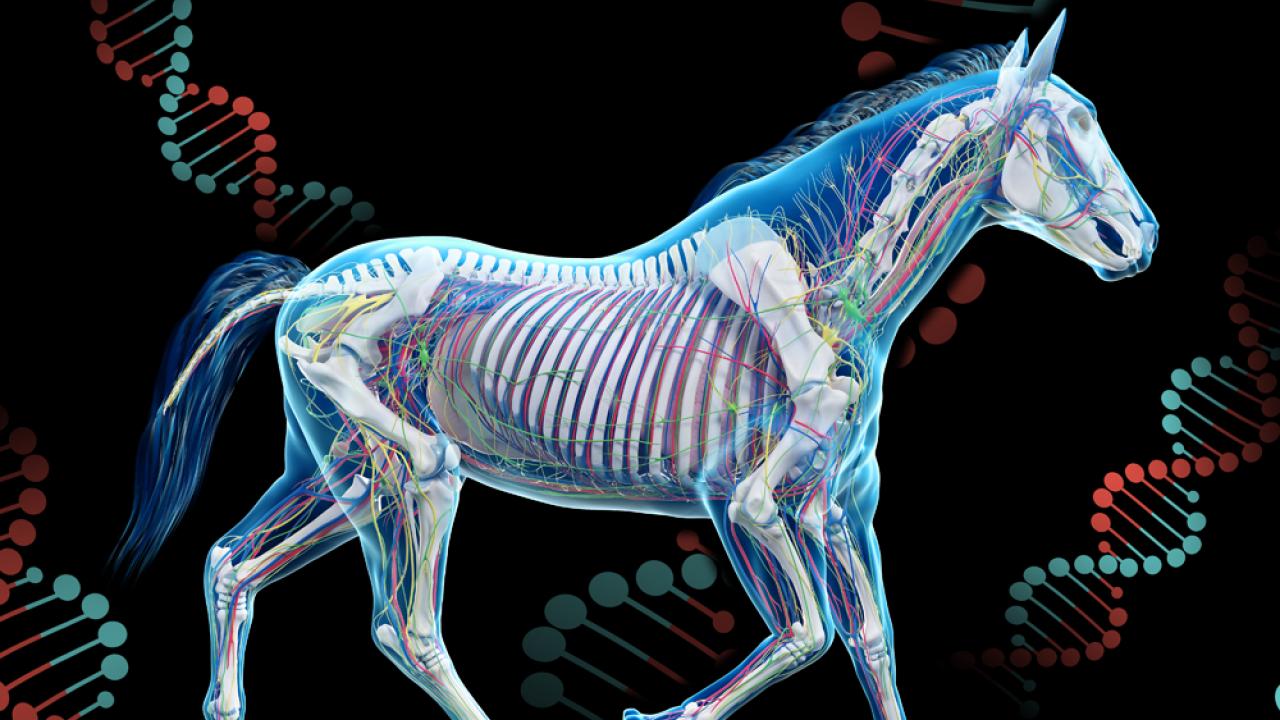
Collaborative Research at VGL Expands Knowledge of Equine Genome
A recent publication co-authored by VGL researchers and other members of the equine genetics research community highlights how collaborative work, including an “adopt-a-tissue” initiative, have allowed researchers to annotate tissue-specific elements of the equine genome. The paper, published in Frontiers in Genetics, describes how the group assayed four types of horse tissue to characterize regulatory regions, which are areas within the genome responsible for modulating the expression of genes. While these regions do not directly code for traits themselves, they can affect when, where, and how those traits are expressed. The data generated by this research into tissue-specific elements of the horse genome was added to a growing, publicly accessible dataset available to scientists worldwide.
To assay the tissues, researchers used a method called histone mark ChIP-sequencing to target four specific histone modifications that are associated with regulatory areas of the genome. ChIP-sequencing (short for Chromatin Immuno-Precipitation Sequencing) is a method used to identify locations in the genome where DNA and specific proteins are bound. In this research, histones with specific chemical modifications were the proteins of interest. These histone-DNA interactions affect the cell machinery's access to the DNA and thus play an important role in regulating gene expression.
This research is part of a larger undertaking by the international Functional Annotation of ANimal Genomes (FAANG) Consortium, which aims to annotate the major functional elements in the genomes of domesticated animals. Genetic annotation is the process of collecting information about and describing a gene's biological identity. The first author of this work, Nicole Kingsley, a Ph.D. candidate at the VGL, offers a helpful analogy:
I like to describe functional annotation as figuring out what makes your heart act like a heart and not like your liver. Both of those tissues have the same DNA (or the same cookbook, blueprints, directions, etc.) in their cells but they use them in different ways to get unique results. In particular, this work focused on epigenetics and identifying sites of genomic regulation. I was searching for the sticky notes, the underlines, the dog-eared pages, and the crossed out recipes that make a menu specific to the chef of the heart different from the one made by the liver chef, even when they start out with the same cookbook.
How did the researchers choose which tissues to focus on? An international collaboration called "Adopt-A -Tissue" allowed for sponsorship of tissues that have a major impact on equine health and are of importance in the equine industry. For example, skin tissue is involved in dermatological diseases as well as coat color. Previous research has demonstrated that some disease and/or coat phenotypes, such progressive graying (the gray gene), are linked to mutations affecting gene expression. With the newly available regulatory region data from the four additional tissues analyzed in this paper, equine researchers from around the globe can pursue studies investigating genetic variants that affect gene expression, targeting tissues and traits of high interest.
To read the paper, visit https://doi.org/10.3389/fgene.2021.649959
This work is part of a large international collaboration led by Drs. Carrie Finno (UC Davis), Jessica Petersen (University of Nebraska, Lincoln), and Rebecca Bellone (VGL Director). This work was partially supported by A1201 Award: 2019-67015-29340, Project Accession: 1018854, from the USDA National Institute of Food and Agriculture and research funding from the Grayson Jockey Club.
References
Kingsley, N.B., Hamilton, N.A., Lindgren, G., Orlando, L., Bailey, E., Brooks, S., McCue, M., Kalbfleisch, T. S., MacLeod, J.N., Petersen, J.L., Finno, C.J., Bellone, R.R. (2021). “Adopt-a-Tissue” Initiative Advances Efforts to Identify Tissue-Specific Histone Marks in the Mare. Frontiers in Genetics, 12, 390. doi: 10.3389/fgene.2021.649959
